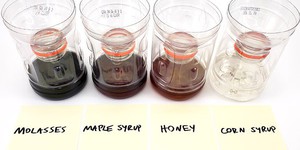Others Like “Does Body Size Matter?” (top 20 results)
|
One thing that all living things have in common is that they grow through cell division. How is this growth regulated? Sometimes growth occurs when it is not supposed to, leading to cancer. Scientists are trying to discover how growth is regulated, hoping to find potential cures for cancer. One idea is that cells keep track of growth using special regions of the chromosome called "telomeres" that count how many divisions a cell has made. If this is true, then growth, cell division and age are…
Read more
You can study hazards that affect coastal areas. What geological forces cause a tsunami? A tsunami (Japanese for 'harbor wave') is a wave generated by an undersea earthquake, landslip, or volcanic eruption. You can demonstrate what causes a tsunami by simulating an undersea earthquake with a water table. How does the depth of water effect the height of the wave? Do different slopes of bottom change the speed of the wave? Visit the USGS Coastal and Marine Geology Program to find out about…
Read more
Animals have different levels of activity depending upon their habitat, metabolism and behavior. Diurnal animals are more active during the day. Nocturnal animals are more active at night. Being diurnal or nocturnal may have different advantages for different animals. For example, desert animals tend to be nocturnal so they can stay cool and escape the desert heat present during the day. What types of diurnal and nocturnal animals are common in your area? You can set out a small trap to…
Read more
Humans are bipedal, which means we walk using two legs. This gave humans an adaptive advantage during the evolution of humankind. Being bipedal gave humans additional speed, balance and flexibility used for walking, hunting or traveling long distances. However, we may have lost the ability to climb or swing in trees like other primates. How much faster can you go when you are bipedal? Have a race with your friends using two legs, and then four legs (use your arms as your 3rd and 4th legs).…
Read more
Do you really catch more flies with honey than with vinegar? Do an experiment to find out! Watch the video above to learn how to make a simple homemade fly trap using a plastic bottle. Then, experiment to discover which bait attracts the most flies. You can try a variety of liquids, and you can also use solid bait like rotting food or meat, but you will need to add some water so the flies drown. A drop of soap can help break the surface tension of the water, making it easier for the flies to…
Read more
During metabolism, organisms experience physical and chemical changes. All animals need some way to exchange chemical waste generated during metabolism for fresh nutrients. One way that these metabolic chemicals are exchanged is during respiration, the process by which used carbon dioxide gas is exchanged with fresh oxygen and circulated throughout the body. How do organisms living underwater respirate? They use gills, which filter oxygen from the water and pass the oxygen into the…
Read more
When you take medicine, it needs to dissolve in order to be passed into your bloodstream to have an effect. On the other hand, the drug needs to be packed into a small, dense pill to make it easier to swallow. How does the delivery method of a drug change how quickly it enters the bloodstream? Compare different brands of a drug to find out which brands dissolve the quickest. Does the pH of the stomach (which is usually between 1 and 2) matter? Compare coated to uncoated pills: does the coating…
Read more
Aerodynamics and Hockey: Does the Force of Drag Have an Effect on the Distance the Puck Will Travel?
Think of a way to launch the puck with a reproducible force, and examine the effect of launching the puck in different orientations on the distance it travels. For more information on the physics, see Haché, 2002.
Read more
This project idea is inspired by former NASA engineer Mark Rober's "Squirrel Ninja Obstacle Course":
You do not need to build a full obstacle course as intricate as Mark's (although you certainly can if you want to!) to make this into a fun science project. For example, how far can squirrels jump? You could test this question by building a mobile post and placing it next to a bird feeder. The bird feeder in Figure 1 is mounted on a metal pole. The pole is protected by a squirrel baffle, a…
Read more
When you go to the beach, you may not know if the beach is natural or man-made. The popularity of sandy beaches prompted developers in the past to bring in sand to cover rocky shorelines and turn them into more popular sandy beaches. However, the actions of the tides, currents and waves carried the extra sand out into the reef, endangering the reef and the creatures living on it. You can use a water table to conduct experiments with sand movements and reefs. How is sand moved by water? How…
Read more
|
Explore Our Science Videos
Balloon car lesson plan
Vibration & Sound: Make Sprinkles Dance
Make a Water Strider - STEM Activity









